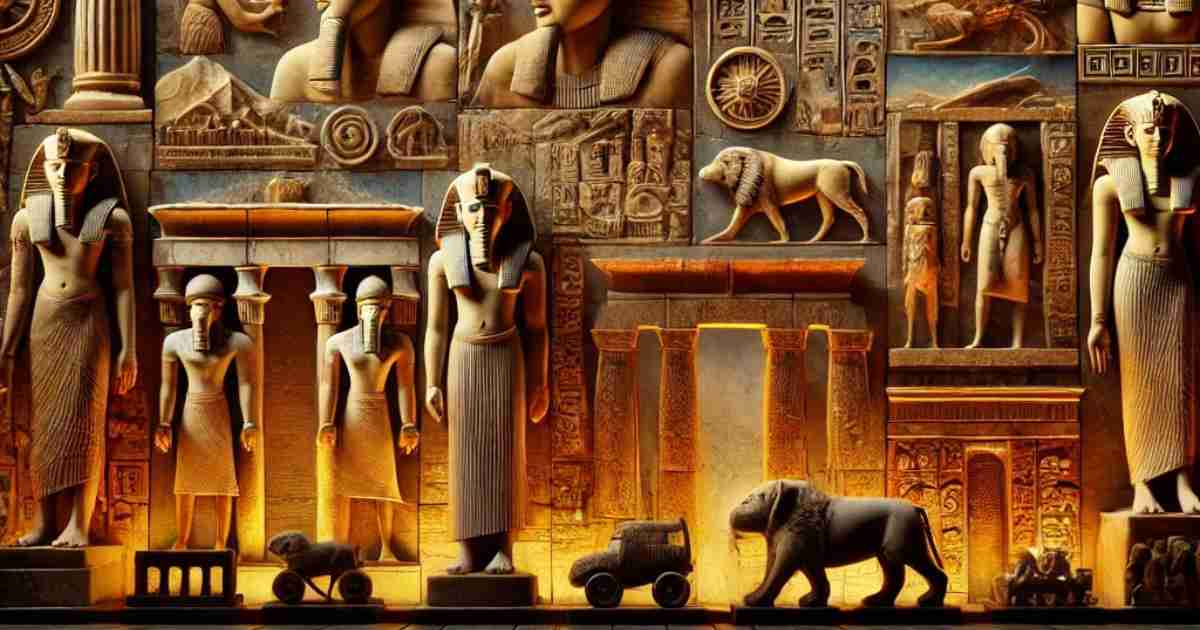Ancient Artz: Discover Timeless Beauty, Techniques, and Cultural Treasures

The world of ancient art, often called “ancient artz,” is a fascinating journey through history, where each civilization left an indelible mark on culture and creativity. This article will explore the evolution, key civilizations, techniques, materials, and preservation of ancient art, focusing on providing readers with valuable insights into this captivating subject.
The Evolution of Ancient Artz
Ancient artz reflects early civilizations’ cultural, spiritual, and societal values. Each era saw significant developments that shaped art’s purpose and methods:
- Early Beginnings: Art first emerged as a means of communication and expression. Early humans painted cave walls, depicting animals, hunting scenes, and symbols of life.
- Symbolism and Religion: Art evolved to reflect religious beliefs and societal values. Temples, sculptures, and paintings became tools to honor deities, mark important events, or tell stories.
- Classical Refinement: Civilizations like Greece and Rome set standards for beauty, realism, and structure, influencing art for centuries.
Key Civilizations in Ancient Artz
Several civilizations were pivotal in shaping ancient artz. Some of the most impactful ones include:
- Ancient Egypt: Known for its religious motifs, hieroglyphs, and impressive sculptures.
- Mesopotamia: The cradle of civilization, renowned for its symbolic carvings and architectural advancements.
- Ancient Greece and Rome: Masters of form, proportion, and naturalism, laying the foundation for Western art.
- Indus Valley: Recognized for its sophisticated urban planning and intricate pottery.
- China: Esteemed for its calligraphy, silk paintings, and bronze sculptures, emphasizing harmony and nature.
Ancient Egyptian Art
Ancient Egyptian art is one of the most instantly recognizable forms of ancient artz. Rooted deeply in religious beliefs and the afterlife, Egyptian art reflects their connection to spirituality:
- Characteristics**: Egyptians followed strict conventions; figures were portrayed in profile with detailed facial features.
- Art Forms**: Known for monumental structures like the pyramids, tomb paintings, and elaborate jewelry.
- Materials and Techniques**: Stone, gold, and lapis lazuli were common, crafted using intricate inlaying and carving techniques.
Greek and Roman Art
Greek and Roman art, pivotal in the history of ancient artz, emphasized realism, human anatomy, and perfection.
- Greek Art: Known for its sculptures of gods and athletes, pottery, and temples like the Parthenon, which reflected ideals of symmetry and balance.
- Roman Art: Built upon Greek techniques but added a practical dimension, often depicting emperors, battles, and daily life scenes.
Mesopotamian Art
Mesopotamian art, emerging from one of the earliest known civilizations, blended symbolism, power, and ritual.
- Notable Art Forms: Ziggurats, cylinder seals, and relief carvings.
- Artistic Purpose: Art served as both religious and administrative tools, with many pieces depicting gods, kings, and mythological stories.
Cultural Significance of Ancient Artz
Art was a vital cultural element, embodying societal values, religious beliefs, and even political structures:
- Religious Functions: Much ancient art was created as offerings or representations of deities.
- Storytelling: Murals, pottery, and carvings were used to communicate stories, historical events, and societal norms.
- Identity and Legacy: Art helped civilizations leave a lasting legacy, preserving their beliefs, lifestyles, and aesthetics for future generations.
Techniques and Materials in Ancient Artz
The craftsmanship of ancient artz was marked by unique techniques and materials that added character and longevity to each piece.
Common Materials Used in Ancient Artz
Materials played a crucial role in ancient art’s durability and visual appeal. Here are some of the most commonly used:
- Stone: Often used for sculptures and buildings, especially in Egypt and Mesopotamia.
- Clay: Popular in Mesopotamia and the Indus Valley, used for pottery, tablets, and statues.
- Metal: Gold, bronze, and iron were fashioned into jewelry, weapons, and decorative items.
- Papyrus and Parchment: Utilized by the Egyptians for writing and creating illustrations.
Techniques in Ancient Artz
Each civilization developed unique techniques for working with their materials:
- Relief Carving: Artists carved figures in stone with intricate detail, as seen in Egyptian and Mesopotamian temples.
- Mosaics: Romans perfected mosaics, creating stunning floors and walls with small colored stones.
- Fresco Painting: In Greece and Rome, artists applied pigments to wet plaster to create vibrant, lasting images.
Preservation and Restoration of Ancient Artz
Preserving ancient artz is complex, requiring expert techniques to maintain and restore these priceless artifacts.
- Challenges: Weathering, environmental conditions, and human interaction can damage ancient pieces.
- Restoration Techniques: Modern methods include chemical treatments, 3D scanning, and digital reconstruction, allowing for careful restoration without altering the original structure.
- Ethical Considerations: Conservationists aim to balance preserving the integrity of the artwork with preventing further decay, a meticulous process requiring expertise and respect for the cultural significance of each piece.
[Also Read: Cyber Insurance Coverage and Silverfort]
Conclusion
The ancient artz provides a window into humanity’s past, revealing our ancestors’ beliefs, values, and creativity. Each civilization, from Egypt to Rome, contributed to the evolving landscape of art, bringing unique styles, materials, and techniques to the world. These artistic expressions showcase historical advancements and hold immense cultural significance, making preservation efforts essential. Through modern techniques, we can ensure that these artistic legacies endure, allowing future generations to appreciate ancient art’s beauty, skill, and insight.